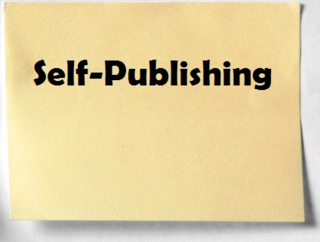What needs to go on your book’s title pages
The very  first pages readers will see when they open you book are the title pages? Titles pages? Yes, you’ll have two of them.
first pages readers will see when they open you book are the title pages? Titles pages? Yes, you’ll have two of them.
The first is the half title page, which just lists the title and author’s name, both in large letters, and maybe the publisher. Sometimes this is referred to as the cover page. The second one is the title page, which lists everything on the half title page, your ISBN, and so on, usually in very small lettering. Some people call this the “copyright page” because it gives the year that the book was first published.
To give your book a professional appearance, you’ll need both title pages. Keep each to a single page, however.
The half title page is fairly easy to put together. Its three parts include:
g Book title (with the subtitle)
g Author’s name
g Publisher’s name and city
The title or copyright page is a bit more intricate. Its parts, from top to bottom, include:
g Title of book (with subtitle)
g Author’s or editor’s (if an anthology) name
g Copyright date
g Credits for who took photos, designed the cover, drew illustrations, created charts
g Listing of rights (always use “All Rights Reserved” for your self-published book)
g Passage limiting use of reproduction of the book
g Passage stating characters and events are entirely fictitious (if a novel)
g Passage stating you bear no responsibility for advice (medical, financial, etc.) dispensed (use passage only if such advice is provided)
g Credits if parts of the book (such as whole short stories or essays) were reprinted from another source
g Publisher’s name and address
g Address for publisher or for your book’s website (or both)
g ISBN and Library of Congress Control number
g Country where book was printed
g Month and year of first printing and of the current edition’s printing
The title pages can be designed in any number of ways. Look at books that are the same dimensions (width and height) as the one you’re writing and follow that format.
When listing credits on the title page, you can include anyone you like. But generally the modus operandi for title pages is to only list those who created material actually reproduced in the text. This primarily would include the book’s authors (if an anthology, the editors instead), the photographers, the cover artist/designer, and illustrators. A host of others who helped with your book more properly belong in the acknowledgements. These include editor and proofreaders, agent/manager, contributors/advisers, research assistants, office and contracted staff (attorney, accountants, secretaries/exec assistants, and book paginators. Regardless of who you select for the title page, make sure you have names spelled and titles given correctly.
Need an editor? Having your book, business document or academic paper proofread or edited before submitting it can prove invaluable. In an economic climate where you face heavy competition, your writing needs a second eye to give you the edge. I can provide that second eye.
Related articles
 How your text should appear in a formatted book
How your text should appear in a formatted book Value of creating your own publishing company
Value of creating your own publishing company Decide what your book's website will look like
Decide what your book's website will look like



